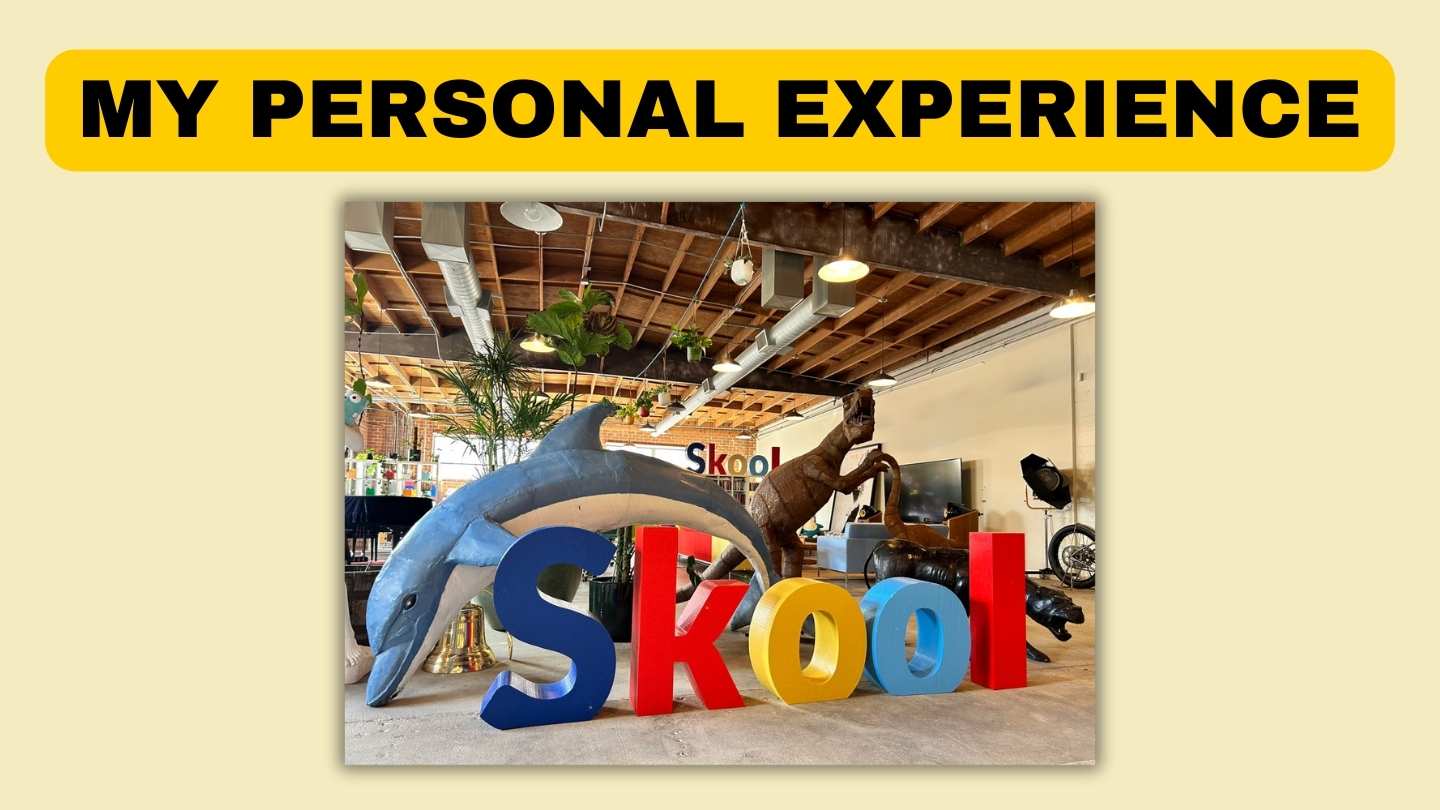Hey there, innovator!
Have you ever felt overwhelmed managing your tech tutorials, answering endless questions, and juggling multiple platforms to engage your audience? When I first started creating tech content, my code snippets were on GitHub, my tutorials on YouTube, and audience questions scattered across Twitter and email. It was chaotic, to say the least.
That’s why I turned to the Skool community app. It’s a game-changer for tech influencers—bringing your tutorials, discussions, and audience engagement into one sleek, centralized space.
In this guide, I’ll show you:
- How to set up your own Skool community from scratch.
- Practical examples tailored for tech and software creators.
- How to get started with a FREE 14-day trial to test it risk-free.
By the end, you’ll know how to create a dynamic, interactive hub that empowers your followers while streamlining your workflow.
Let’s dive in!
What Kind of Skool Community Should You Create?
Before you build your Skool community, think about the specific niche you’re passionate about. The more focused your community, the easier it will be to attract engaged members.
Examples:
- If you’re a software developer, your community could feature coding challenges, bug-fixing Q&As, and frameworks for mastering new languages.
- If you specialize in cybersecurity, you might create a hub for threat analysis discussions, hands-on exercises, and resources on penetration testing tools.
- If you’re into AI and machine learning, your community could provide project walkthroughs, Python notebook demos, and discussions about the latest innovations in the field.
Questions to Ask Yourself:
- Who are your ideal members? (Beginner developers, experienced engineers, or tech enthusiasts?)
- What challenges do they face? (Learning complex concepts, debugging code, or staying updated with trends?)
- What’s their ultimate goal? (Building projects, landing a job, or mastering a skill?)
Pro Tip: A well-defined focus ensures your community will deliver value that keeps members coming back.
Step 1: Understand Your Audience
To create a thriving Skool community, you need to deeply understand your audience. Let’s say your followers are budding developers aiming to break into the tech industry.
How to Identify Their Needs:
- Skill Level: Are they complete beginners, intermediate coders, or seasoned professionals?
- Learning Style: Do they prefer live coding sessions, pre-recorded tutorials, or text-based walkthroughs?
- Availability: Are they full-time learners who can join hour-long sessions, or do they need bite-sized lessons?
Example:
If you’re helping beginners learn Python, you might design a community with quick coding exercises, a “Beginner’s Corner” thread for questions, and weekly live debug sessions.
Step 2: Brainstorm Community Ideas
Now that you know your audience, it’s time to design an engaging and resource-rich space for them.
A Few Specific Ideas:
- Tech Toolbox: A curated section with must-have resources like IDE recommendations, cheat sheets, and GitHub repositories.
- Live Debug Sessions: Monthly live streams where members bring their code issues, and you troubleshoot them in real-time.
- Hackathon Prep Hub: Guides, challenges, and resources to help members ace hackathons or coding competitions.
Example:
If you’re an app development influencer, your Skool community could include:
- A “Framework Fridays” post highlighting tools like Flutter or React Native.
- A “Code Critique” thread where members share their work for feedback.
- A monthly challenge to build a mini app and showcase it to the group.
Step 3: Set Up Your Skool Community
Skool’s intuitive platform makes it easy to structure your community and foster interaction.
Create Sections for Content:
- “Coding Tutorials” Section: Organize step-by-step lessons for different skill levels.
- “Resource Library”: Share your favorite tools, extensions, and learning materials.
- “Community Code Lab”: A space for members to collaborate on projects and share solutions.
- “Live Events”: Schedule webinars or AMA sessions to address trending tech topics.
Add Interactive Features:
- Use polls to ask members about their preferred learning focus: “Should our next tutorial cover Docker, Kubernetes, or Jenkins?”
- Encourage members to post their own mini-projects and request feedback.
Make It Fun and Engaging:
- Offer challenges:
- A “Bug Hunt Challenge” where members identify and fix bugs in a shared piece of code.
- A “Tool of the Month” challenge to explore and implement a new tech tool.
- Celebrate milestones: Highlight members who complete challenges or land their first tech job.
Step 4: Spread the Word
Once your Skool community is ready, invite your audience to join!
Promotion Strategies:
- Social Media Posts: Share an Instagram Reel or LinkedIn post introducing your community: “Are you ready to level up your tech skills? Join my exclusive group for hands-on tutorials and live coding sessions. Free for 14 days!”
- Newsletter Announcement: Send a detailed email to your subscribers showcasing the benefits of joining your community.
- Collaborations: Partner with other tech influencers or industry professionals to cross-promote your community.
Step 5: Keep Improving
Your community will grow and evolve. Stay tuned to your members’ needs and keep things fresh.
Tips for Growth:
- Feedback Polls: Ask, “What topics should we cover next: blockchain, AI, or DevOps?”
- Guest Experts: Invite notable tech professionals to host workshops or Q&As.
- Celebrate Successes: Share member achievements, like completing a project or landing a tech internship.
How Much Does It Cost?
Good news—Skool offers a 14-day free trial to explore all its features. During this time, you can:
- Invite your core audience (20-30 people).
- Gather their feedback.
- Decide if upgrading to a paid plan aligns with your goals.
Conclusion
Building a Skool community for tech influencers is a powerful way to engage your audience, share your expertise, and create lasting value. It’s a hub where your followers can learn, grow, and collaborate—all while giving you an organized platform to deliver your content.
Here’s Your Plan:
- Understand your audience’s tech goals and challenges.
- Create interactive and educational activities tailored to their needs.
- Use Skool’s platform to structure and manage your content seamlessly.
- Promote your community through social media and email outreach.
- Continuously enhance your offerings based on feedback.
Why wait? Start your 14-day free trial today and watch your community—and your impact—grow.
👉 Ready to begin?



